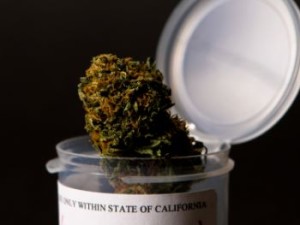California’s Current Marijuana Laws
Medical marijuana is currently legal for certain individuals in California with certain restrictions. While medical marijuana patients are legally allowed to cultivate and process as much as 6 mature plants or 12 immature plants and 8 ounces of bud under California law, there are guidelines for being able to enjoy the privilege.
Medical Marijuana Program

The state currently implements a Medical Marijuana Program as instituted by the Department of Public Health. This program was established specifically for the purpose of creating a state-issued medical marijuana identification card system. The program was also implemented in order to establish a database that would serve to verify patients qualified for medical marijuana and the caregivers of such patients.
Participation in the Medical Marijuana Program is on a purely voluntary basis. Participants in the program will be legally allowed to possess, cultivate, transport, and use medical marijuana within the state’s boundaries. The database is available for perusal by the public in its online form on the Internet.
In order to participate in the Medical Marijuana Program, applicants will have to secure a medical marijuana ID card from the county health department of the community where the applicant resides. It should be mentioned that the Medical Marijuana Program does not have jurisdiction over cooperatives, dispensaries, or collectives involved in dispensing medical marijuana.
Marijuana Dispensaries in California
In a decision handed down by the California Supreme Court in May 2013, it was ruled that the operation of medical marijuana dispensaries is subject to the approval of individual city and county authorities. According to the Supreme Court, both the Compassionate Use Act and the Medical Marijuana Program do not have precedence over the local authorities to invoke zoning laws in the banning of marijuana dispensaries. The Compassionate Use Act was passed in 1996 as a result of the ballot initiative process. The Medical Marijuana Program for its part was passed as supplementary legislation in 2003.
 The Supreme Court decided that the California Constitution gave local authorities the legal right to invoke “police powers” for the purposes of protecting the health and safety of certain zones in their communities. As deemed by the court, local communities have the power to control the development of marijuana dispensaries since state laws do not explicitly or implicitly prevent local communities from prohibiting the development of such establishments.
The Supreme Court decided that the California Constitution gave local authorities the legal right to invoke “police powers” for the purposes of protecting the health and safety of certain zones in their communities. As deemed by the court, local communities have the power to control the development of marijuana dispensaries since state laws do not explicitly or implicitly prevent local communities from prohibiting the development of such establishments.
Some critics of the Compassionate Use Act claim that if the bill had included specific clauses that prevented local communities from invoking police powers in banning marijuana dispensaries, the court’s ruling would have likely turned out the opposite.
What’s Next?
In the wake of decision, the medical marijuana community in California has been rife with confusion with regard to what is next for the state of legal marijuana. Many feel that a new state sanctioned law is looming in the horizon, which may result from either legislation or a new ballot. It is hoped that the new state legislature – if it does come about – would be patterned after marijuana laws in other states and effectively reduce restrictions and even legalize recreational marijuana use.
 California Marijuana Market Breaking "Marijuana News" from CA
California Marijuana Market Breaking "Marijuana News" from CA





